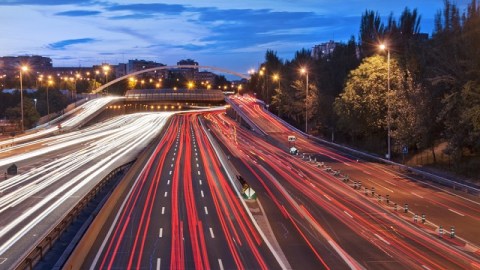What The Wide Open (Driverless) Road Could Look Like

What’s the Latest Development?
Despite the city of Los Angeles having recently synchronized all 4,400 of its traffic signals, a growing group of experts are already looking forward to a time when the signals are no longer necessary. The Institute of Electrical and Electronics Engineers (IEEE) predicts that by 2040 three out of every four cars on the road will be driverless. As a result, familiar markers of the road, such as lane divisions, signs, and speed limits, could change or even disappear. Intelligent cars operating on intelligent roads also “have the potential to smoothly synchronise traffic, eliminating gridlock and accidents forever.”
What’s the Big Idea?
Azim Eskandarian, director of the IEEE’s Center for Intelligent Systems Research, says that autonomous cars will be governed by information flow from both within and without. Already a consortium of manufacturers is working on a systems protocol that will allow cars to communicate with a central command center. With sensors that enable vehicles to sense their proximity to each other, “trains” of cars running closely together at very high speeds could become commonplace. Researchers are also looking into making the roads themselves continuous chargers for the electric cars that pass over them. Eskandarian says these changes could eventually become normal if — and it’s a big if — people put faith into the technology. After all, he says, “We don’t need a pilot’s licence to ride on an aircraft.”
Photo Credit: Shutterstock.com





